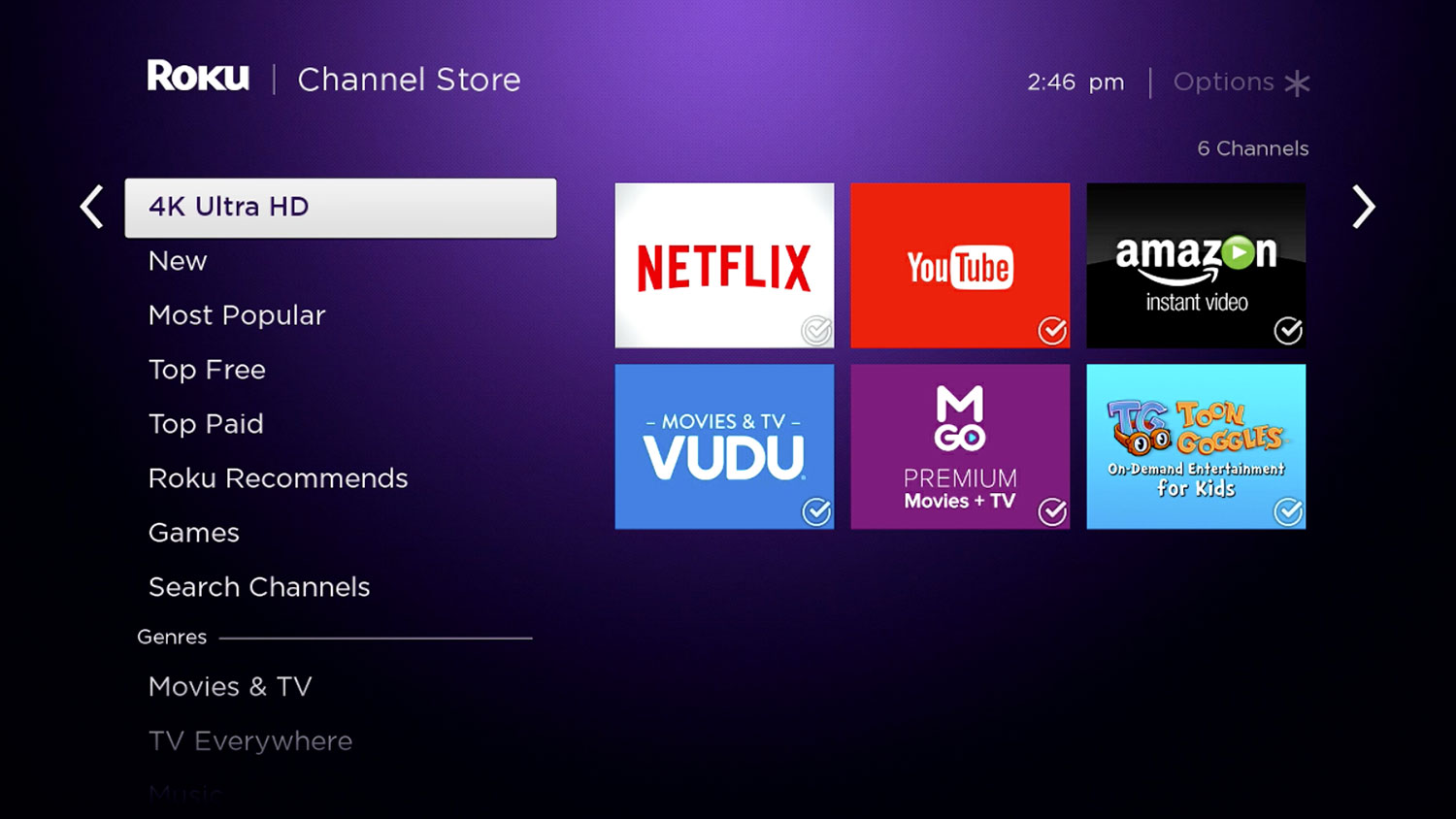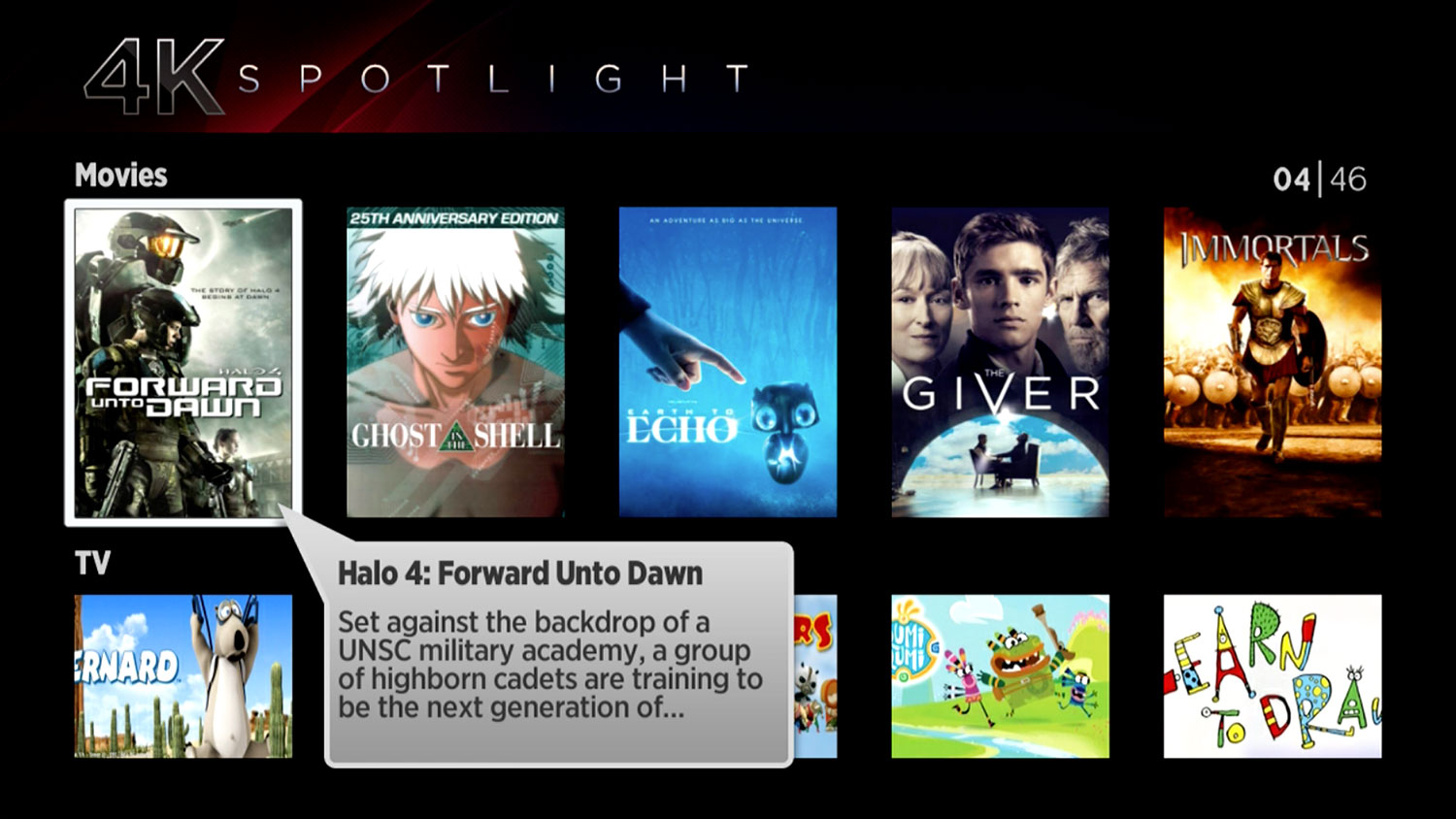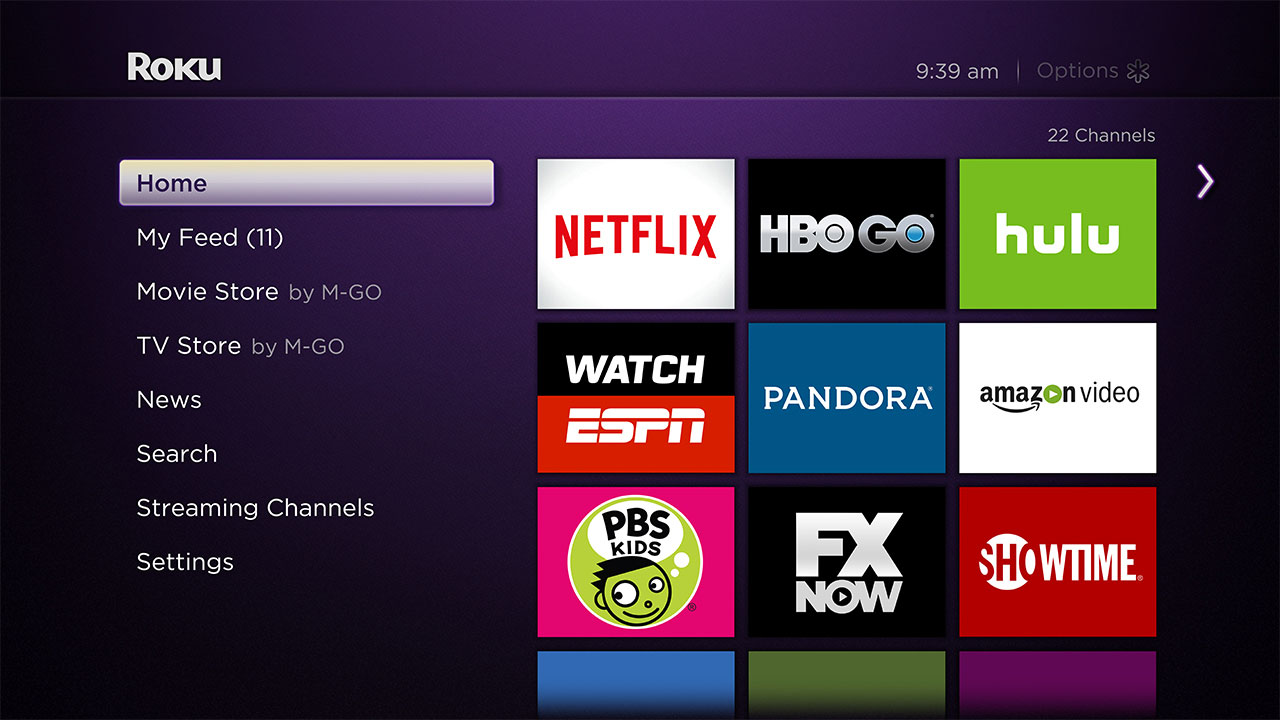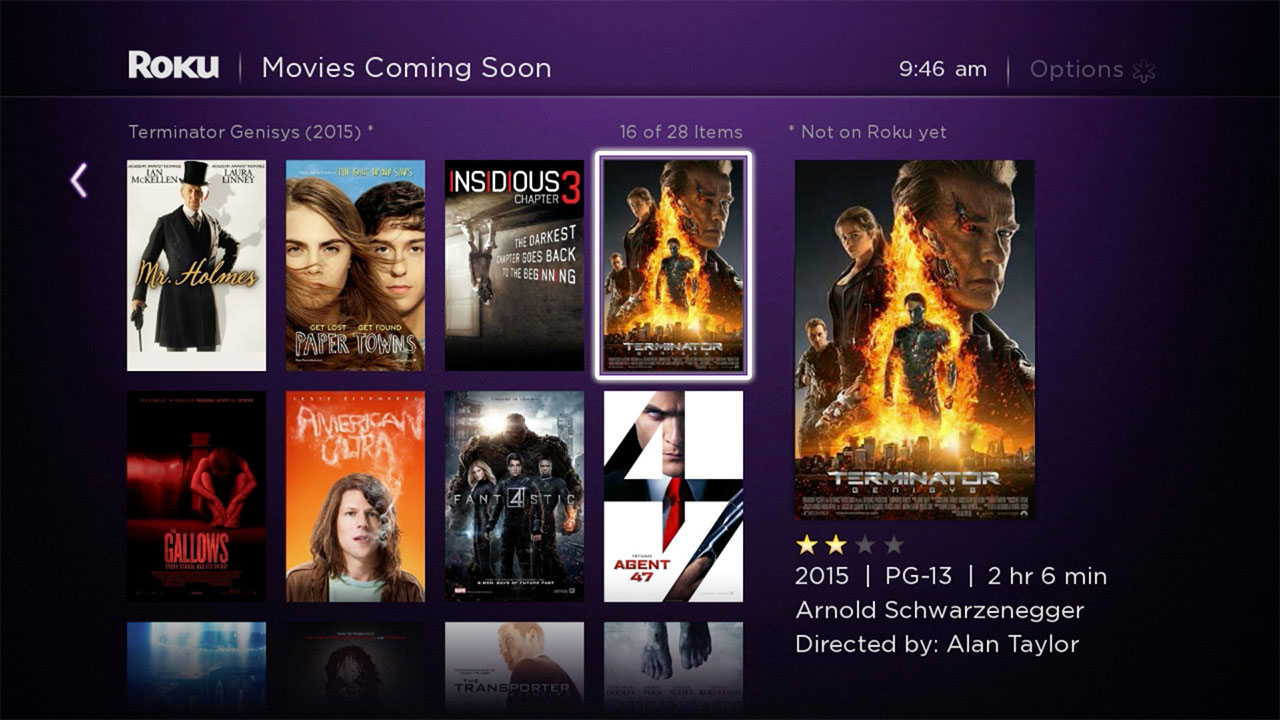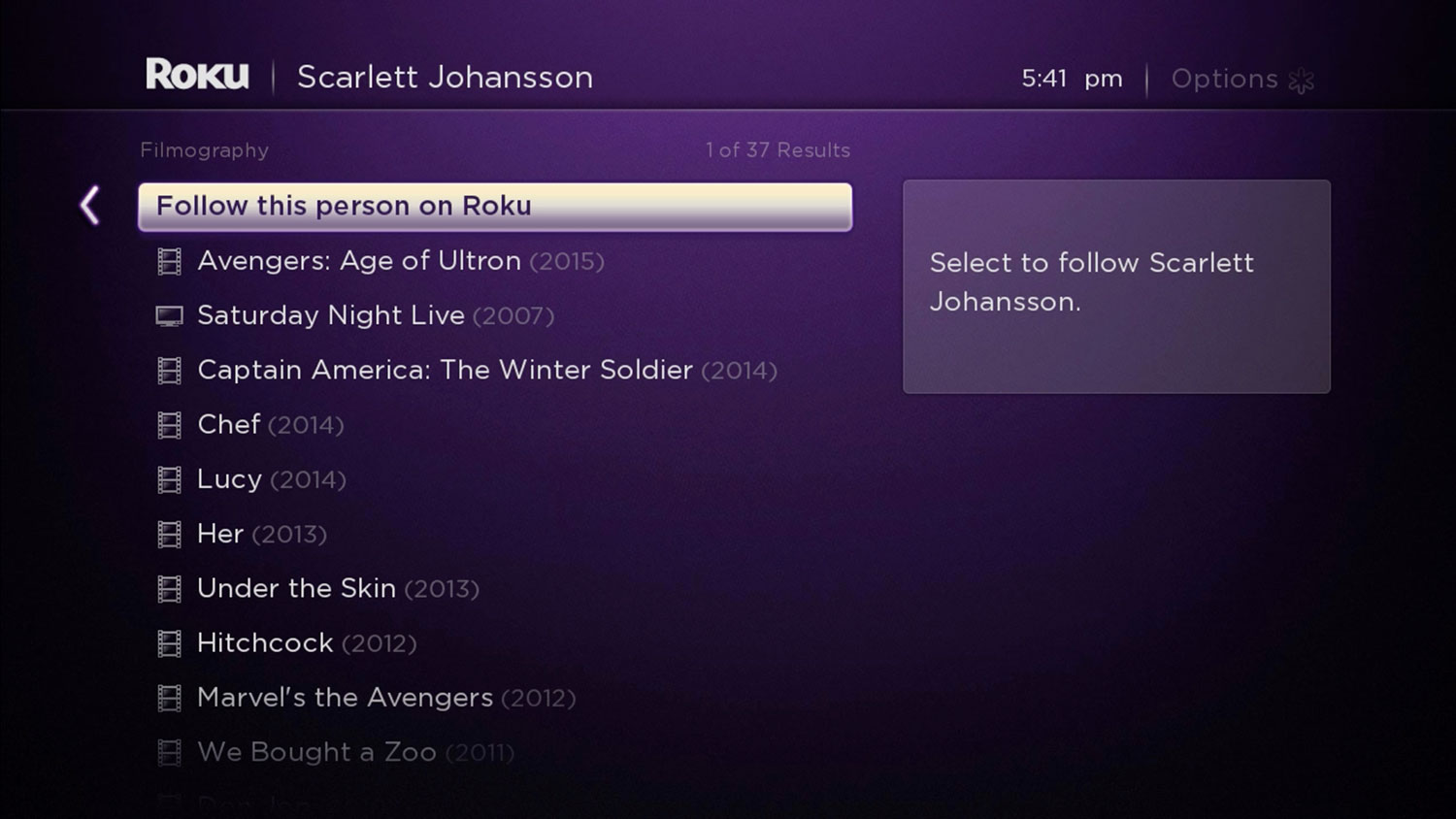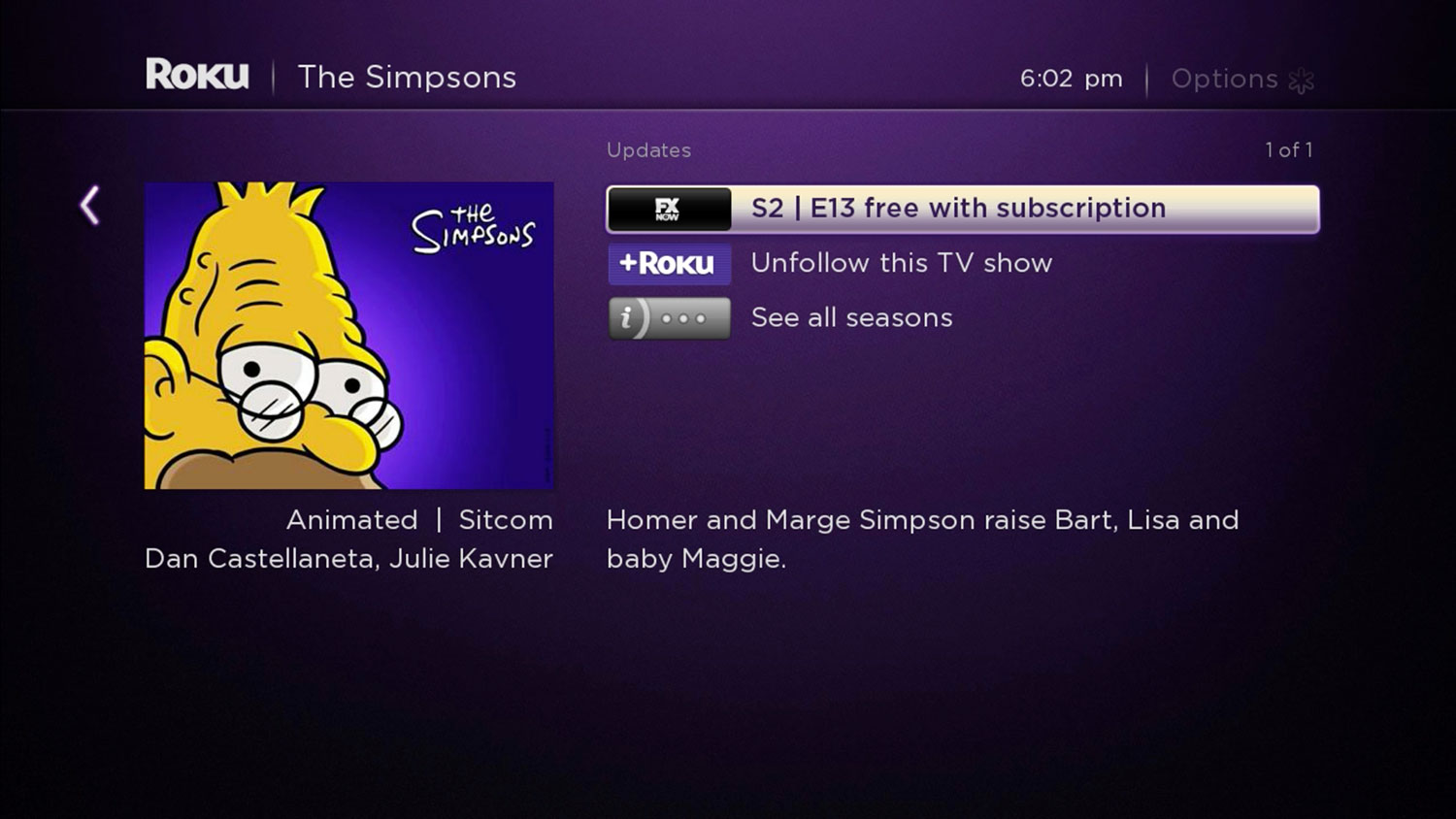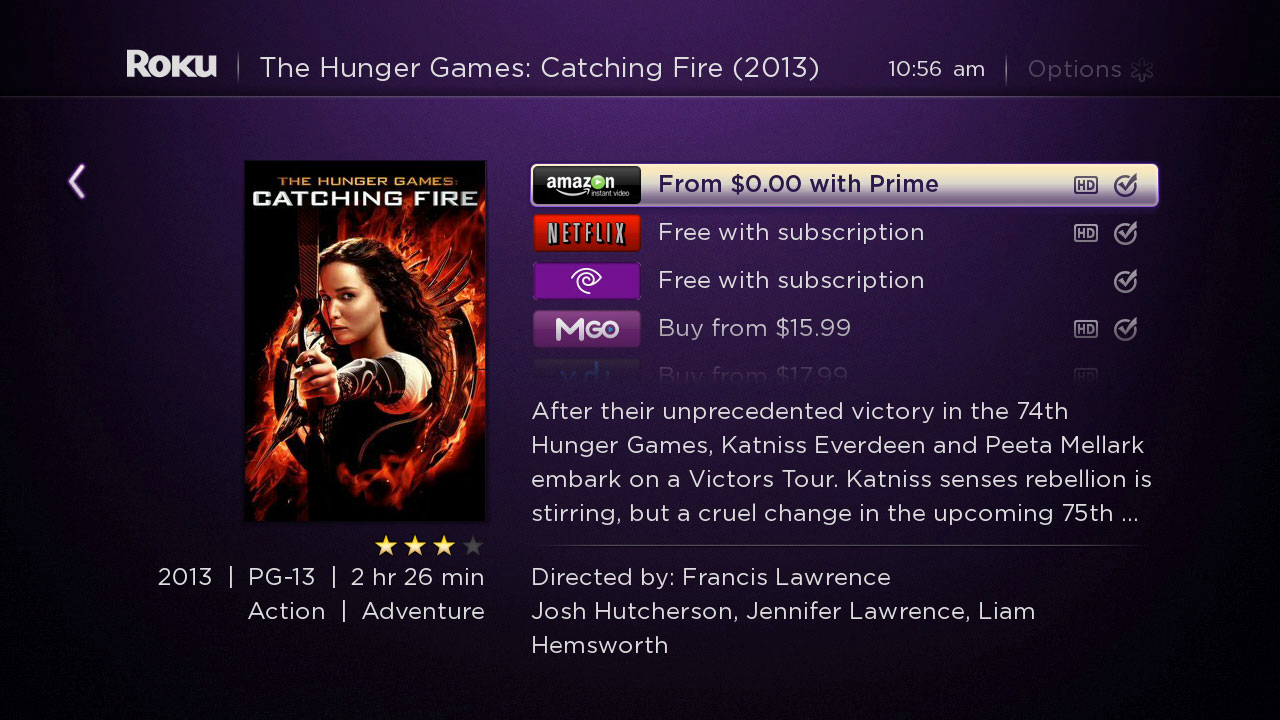After weeks of anticipation stoked by rumors, image leaks, and new boxes from competitors Apple and Amazon, Roku has finally unveiled the Roku 4. The new box brings 4K Ultra HD, convenient new features like a remote-finder button, and a robust new operating system and mobile app that look — and work — better than ever.
Behold the box of the future
The Roku 4 looks less like a hockey puck than in years past, following the thinner, broader profile adopted by the Amazon Fire TV, but with the rounded corners and otherwise bubbly personality Roku has become known for. On the back, an HDCP 2.2-compliant HDMI output supports 4K Ultra HD resolution at up to 60 frames per second. Just below that is a MicroSD card slot for expanded storage.
A quad-core chip powers the box, but Roku hasn’t offered any further details on it just yet. The system does support HEVC (h.265) decoding, as well as the VP9 codec, currently in use by YouTube.

On top of the box is a mystery button that has kept anxious onlookers guessing for the past week or so. Turns out, that’s a new remote-finder button. Simply press it to make the Roku 4’s compact remote chime, making it easy to find when it mysteriously disappears behind couch cushions or bed sheets.
Speaking of the remote, while it may look similar to prior generations, this new wand now supports one of Roku’s key new features: Universal Voice Search. A press of a magnifying-glass button lets you simply speak into the remote to search, rather than typing. Astute onlookers will also notice that Hulu’s dedicated quick-access button has been replaced by one for Sling TV. Hold-over features include the much-loved headphone jack (with included pair of earbuds) for wireless listening, and motion-sensors for some game play.
The defining difference: Roku OS 7
Roku’s operating system has always set it apart from its competitors more than its hardware, and
The aforementioned Universal Voice Search headlines improvements by granting access to Roku’s class-leading search algorithm without the hassle of hunting and pecking on a virtual keyboard. Unlike the Amazon Fire TV,
Content discovery also becomes easier with the enhancement of Roku Feed. Previously, users could “follow” box-office movies and receive an alert when the flick came available for streaming, from which provider, and for how much. Now, users can follow TV shows, actors and directors and get similar alerts.
Roku says the
Otherwise, the new OS looks strikingly similar to the 1080p interface existing Roku users are familiar with, and newcomers find immediately welcoming.
Meet your new road-warrior companion
Ever tote your Roku box or Streaming Stick along with you on vacation in hopes of streaming your favorites while relaxing in the hotel, only to be thwarted by the hotel’s Wi-Fi security measures?
A spiffed up Roku app
Rounding out Roku’s recent announcement is word that its free mobile app for iOS and Android now offers a whole new look, enhanced features, and the addition of Voice Search.
The apps main page now acts more like the Roku home screen, showing updates in the
How does it stack up?
With its latest box, Roku is sticking to its identity as a media streamer first, with user experience top of mind. While Amazon’s Fire TV successfully doubles as a mobile games console complete with available gaming controller,
Roku continues to do what none of its content-hawking competitors can: maintain neutrality between competing apps. It doesn’t care whether you buy shows from Amazon or Apple; the
On paper at least, the Roku 4 appears to remain the most universally approachable streaming media platform on the market. We’ll see how it all plays out in real life when we get our hands on one.
The Roku 4 is available for pre-order today at major retailers and Roku’s website. Availability is slated for sometime this month.
Available from: Amazon Best Buy
